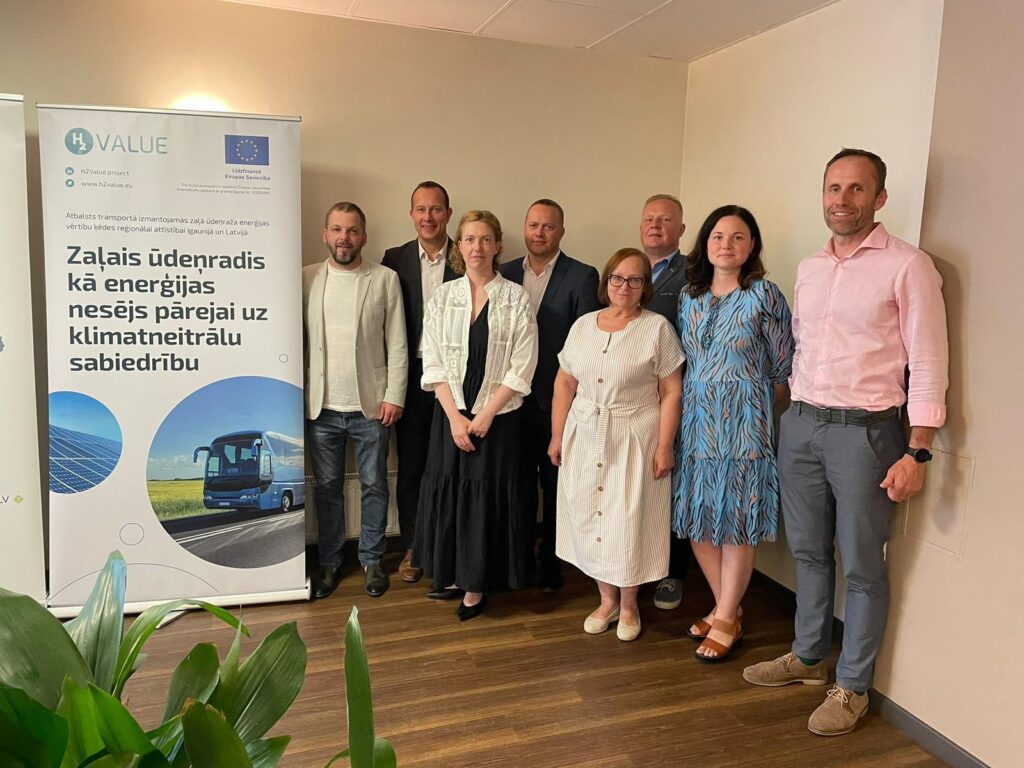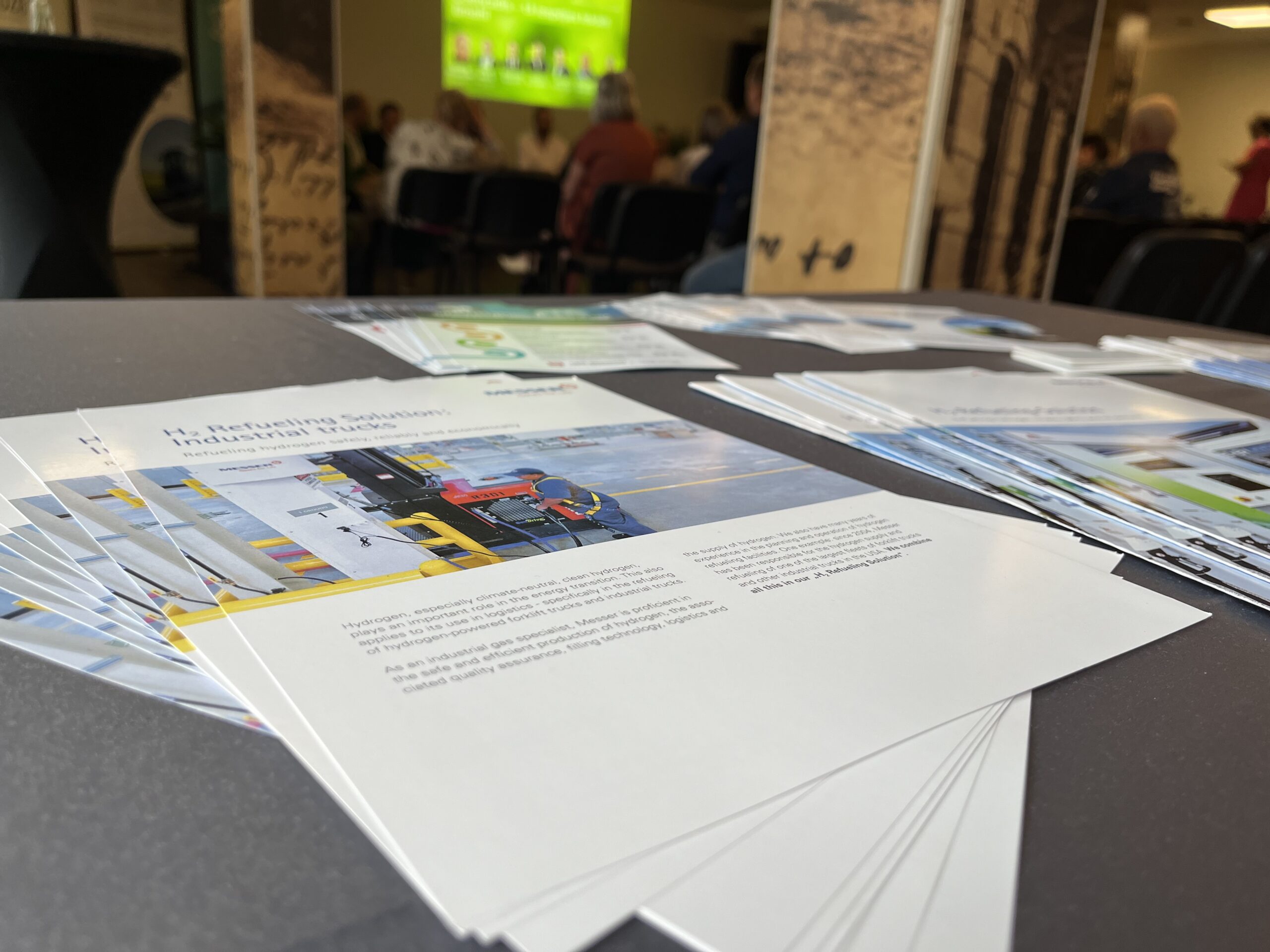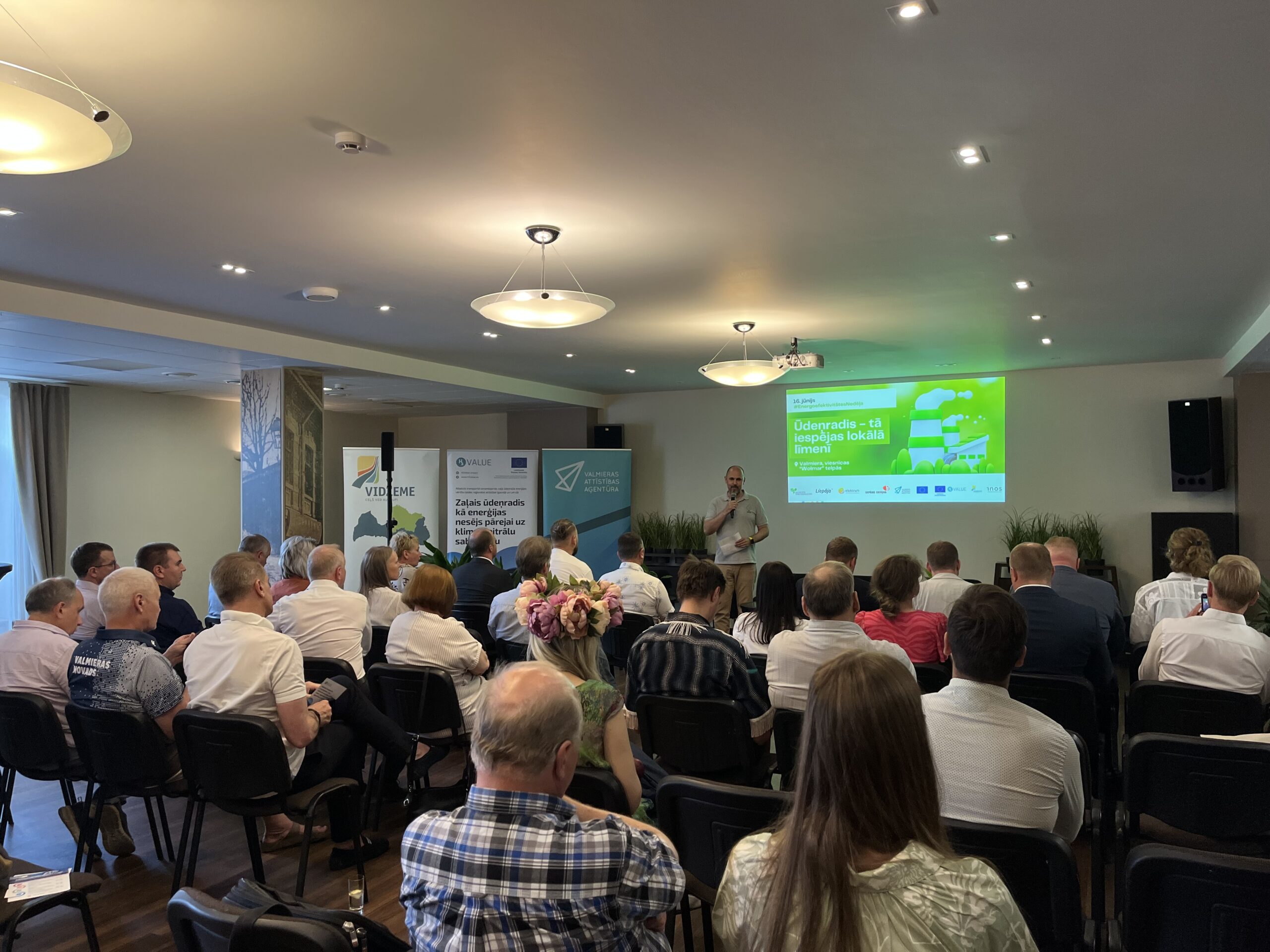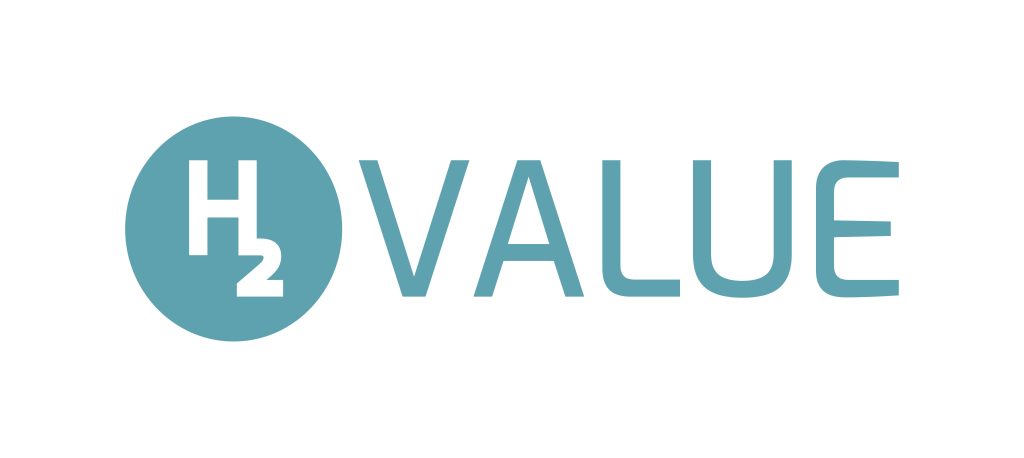As part of the Energy Efficiency Week, a discussion “Hydrogen – its possibilities at the local level” was held in Valmiera in June, paying special attention to the use of hydrogen in the transport sector. Although hydrogen as an energy carrier is unusual here in Latvia and especially in the regions, it should not be considered a distant future perspective. Hydrogen production technologies are already available today, it is only necessary to find solutions on how to apply them in the most effective way, the industry experts emphasize.
Representatives of the Latvian Hydrogen Association, Latvian Hydrogen Alliance, Latvian Wind Energy Association, Vidzeme Planning Region, Valmiera County Municipality, “ZAAO”, “Valmiera Glass Group” and the company “MP Industries” took part in the discussion in Valmiera. Industry experts revealed current hydrogen projects and initiatives in Latvia and here in Vidzeme region.
One of the highlights of the discussion was the question – Why is there an opportunity for hydrogen right now? “Recognizing that there are investments in renewable energy right now, we will soon have a lot of solar and wind parks around us, and at some point, this development will stop. There may come a time when energy producers will have to “shut down” these parks because the price of energy will become negative. At such a moment, the energy producer will no longer be able to recoup his investment. The only way for development to move forward is energy-intensive industries that include hydrogen,” emphasizes Kaspars Liepiņš, activity coordinator of the Latvian Hydrogen Alliance.
Gatis Galviņš, the chairman of the Council of the Latvian Wind Energy Association, added to the answer to this question: “If the wind blows, then wind turbines produce electricity. If the wind doesn’t blow, it doesn’t produce. If no one needs energy on a windy day, then we cannot stop the wind. At the moment, technological development has reached the phase where the technologies are available for us to be able to produce hydrogen from renewable energy and store it.”
Already in this decade, there will be periods in Latvia when the amount of renewable electricity produced will exceed consumption. The electricity can be used to produce hydrogen and stored for use in other periods when renewable electricity is in short supply. In Europe, there are several countries that have started work to create a hydrogen valley, including Estonia, which is currently preparing a national strategy for the development of a hydrogen valley. Hydrogen valley means a locally integrated hydrogen ecosystem, from hydrogen production, storage, and distribution to the end user in industry, mobility and energy. In the BalticSeaH2 project, in which Latvia is represented by the Green-Tech Cluster and the Freeport of Riga, the main task will be to create the first and largest international hydrogen ecosystem in the Baltic region.
Learn more: https://greentechlatvia.eu/lv/2023/02/istenos-projektu-balticseah2/
In Vidzeme, emphasis is placed on the use of hydrogen in the transport sector and potentially in the industry as well. Currently, the Vidzeme Planning Region (hereinafter also VPR) has started work on two projects co-financed by the European Union, HyTruck and H2Value. The main task of HyTruck will be to prepare a strategy for the creation of a network of hydrogen filling stations in several countries of the Baltic Sea Region in the eastern part of the TEN-T corridor, including Vidzeme. On the other hand, the H2Value project with real pilots – a public bus in the Estonian city of Tartu and a waste carrier truck of SIA “ZAAO” in Vidzeme – will test hydrogen’s ability to be a fuel in the transport sector. Krista Pētersone, VPR expert, emphasizes in the discussion that green hydrogen should be evaluated with sustainability criteria that justify investments. Hydrogen currently plays a complementary role among renewable energy sources. The volume produced will be limited and the priority sectors will be commercial transport and industry.
Although both projects have just started work, results are expected from them, which will be able to convince potential investors to create a hydrogen production technology offer in Vidzeme, the largest production companies, and municipalities to become consumers or value chain links, as well as to demonstrate at the national level with data-based results the hydrogen potential in smaller regions. “Hydrogen provides a new opportunity to see an energy supply alternative with which we can ensure energy supply security. With these small pilots, we’ll test hydrogen as fuel for a bus and a waste truck, and with data-driven information, we will bring that grain of rational thought through this hydrogen story. Local fuel with local consumption – to find these synergies and promote various forms of cooperation with added value,” reveals Aivars Starikovs, a Latvian Hydrogen Association board member.
On the other hand, the chairman of the board of SIA “ZAAO” Gints Kukainis emphasizes: “The common policy of the country plays an important role in how Latvia has planned to achieve the GHG reduction goals set by the European Union in the transport sector. Currently, the European Parliament is discussing specific CO2 reduction targets in the transport sector (2030 – 65%, 2035 – 95%). Which energy source will be preferred and supported at the national level in the transport sector – electricity, biomethane or hydrogen? We currently want to work together to understand what it means to drive a hydrogen car in the climatic conditions of Latvia, taking into account the outdoor air temperature in winter, summer, the large network of gravel roads and other conditions. We need examples right here in Latvia and an integrated approach at the national level.” More information about the two projects in Vidzeme H2Value and HyTruck will be published: http://www.vidzeme.lv/
One of the interesting questions of the audience was about the safety of hydrogen – Can it explode? “There are several myths about hydrogen, such as that it can easily explode, is dangerous, expensive and available in the distant future. Gasoline and gas also burn and explode. It is the value of these elements in which energy is formed when it burns. Hydrogen is 14x lighter than air and is volatile. It will quickly dissipate into the atmosphere if it gets into the open air. Of course, if you encounter a spark, it can explode like any flammable substance, but an explosion is possible only for a mixture of pure oxygen and hydrogen. On the other hand, hydrogen in the air, where there is nitrogen with oxygen, will only ignite without an explosion. Accidents can be prevented by following the requirements of fire safety and electrical safety regulations. We have learned to work with this substance,” adds A. Starikovs.
A reminder to the reader how hydrogen is formed:
The chemical formula of water is H2O, which consists of 2 hydrogen atoms and 1 oxygen atom. Hydrogen and oxygen gas are obtained by splitting a water molecule through an electrolyzer. Hydrogen gas can be stored. Green hydrogen is called “green” because the electrolysis process uses electricity from renewable energy sources (solar, wind energy). Importantly, this process does not emit CO2 or air pollutants. When green hydrogen is used for propulsion, the only thing emitted is water steam.
The discussion was organized in Valmiera on June 16 by the Green-Tech Cluster. The event was financially supported by the municipality of Liepaja, Elektrum Energy Efficiency Center, Liepaja Energy, Valmiera Development Agency and Vidzeme Planning Region with the Interregional Innovation Investment Instrument (I3) program 2021-2027 of the European Regional Development Fund financed project H2Value (grant agreement No. 101083881).








